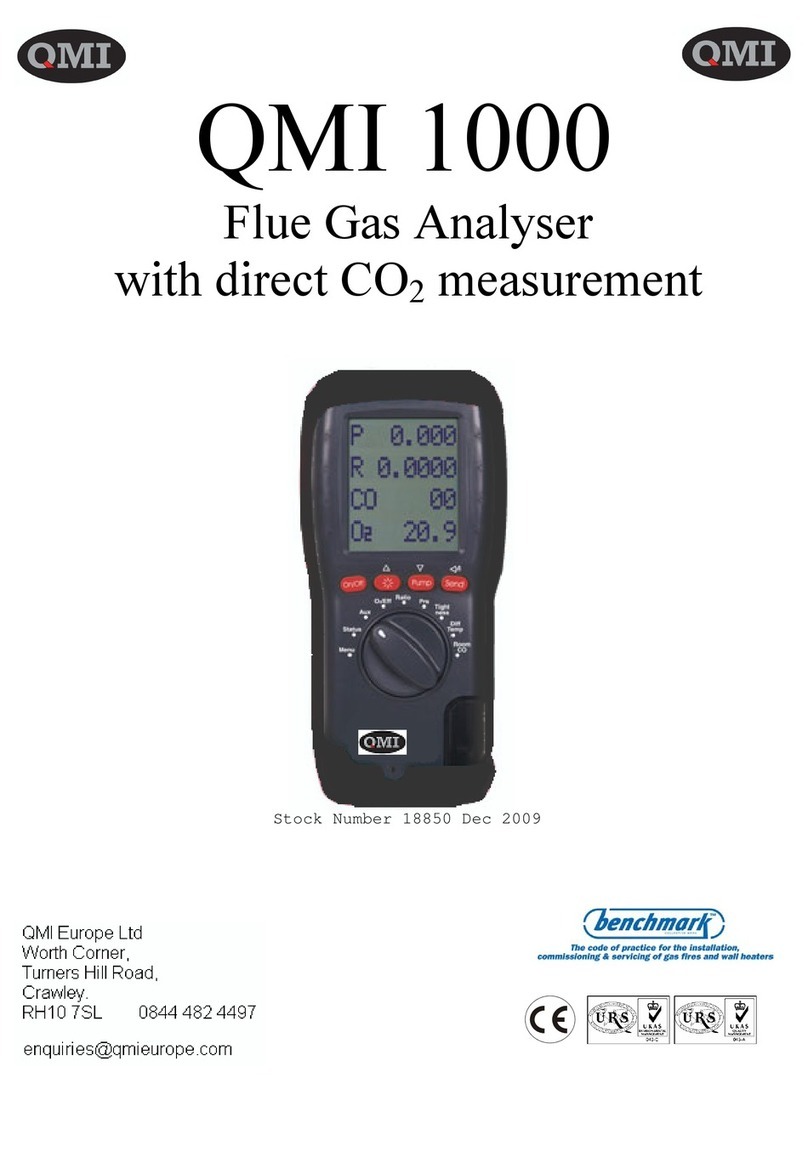
Table of Contents
Technical Specifications Sheet-4
QMI TRIPLEX Central Monitor Unit (CMU) (Q01T): Photograph and Features Sheet-5
Dimensions of TRIPLEX Monitor Sheet-6
Description of Triplex Monitor (Q01T) Sheet-7
Description of Q10 Atmospheric Sensor Sheet-8
Photograph of Q10 Atmospheric Sensor Sheet-9
Drawing of Q10 Atmospheric Sensor Sheet-10
Positioning and Location of Atmospheric Sensors Sheet-11
Positioning of Q10 Atmospheric Sensor Sheet-12
Schematic of Positioning of Sensors and Best Practice Sheet-14
Fault Alarm and Cable Specification Sheet-16
Wiring Description Sheet-17
Wiring of Socket Sheet-18
Wiring for System Layout Sheet-19
Photograph of Power Supply Board (Q01T05) Sheet-20
Drawing of PSB Sheet-21
Schematic of layout for Wiring Option 1: for 1 to 3 Atmospheric Sensors Sheet-22
Drawing – Connection from Atmospheric Sensor to Monitor Sheet-23
Drawing – Wiring from Atmospheric Sensor to Monitor Sheet-24
Schematic of layout for Wiring Option 2: For 2 or 3 Atmospheric Sensors using a Junction
Box Sheet-25
Photograph of unboxed 3 – Way PCB (Q01T06) Sheet-26
Drawing – Unboxed 3 – Way PCB for a Junction Box Sheet-27
Drawing – Wiring from Monitor to PCB (Q01T06) Sheet-28
Drawing – Connections from PCB to Atmospheric Sensors Sheet-29
Drawing – Wiring from Junction Box PCB to Atmospheric Sensors Sheet-30
Alarm Outputs and Alarm Levels Sheet-31
Graph to show relationship between Oil Mist concentration and Digital Alarm readout Sheet-32
QMI Triplex 4-20mA Analogue Data Output - (Optional) Sheet-33
Operation of Alarm Relays Sheet-34
Alarm Level, Checking And Changing Sheet-35
Test Sequence Sheet-36
Channel Numbers, Changing Sheet-37
To Isolate or Restore a Channel Sheet-38
Restore Alarms Sheet-39
Drawing – Layout of Transistors and Fuses Sheet-41
Fault Directory Sheet-42
Maintenance Procedures Sheet-44
Lens Cleaning Procedure Sheet-45
Suggested Maintenance Plan for Atmospheric Sensors Sheet-46
Replacing Fan (Q1004) in Sensor Sheet-47
Maintenance Kit Check List Sheet-48
Spares, Codes and Descriptions Sheet-49
Returns Procedure Sheet-50
QMI Request For After Sales Information Sheet-51




























